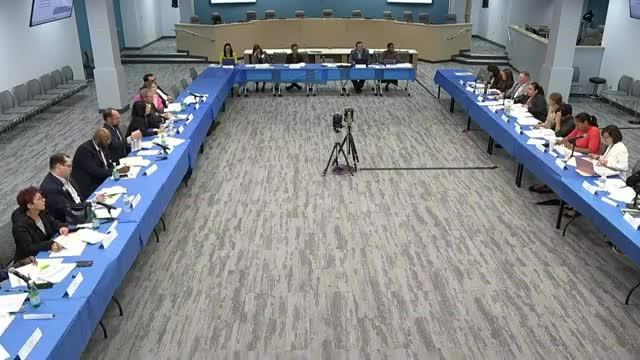School Funding Debate Sparks Controversy Over Impact Taxes
October 01, 2024 | Montgomery County Public Schools, School Boards, Maryland
This article was created by AI summarizing key points discussed. AI makes mistakes, so for full details and context, please refer to the video of the full meeting. Please report any errors so we can fix them. Report an error »

In a recent government meeting, officials discussed critical issues surrounding school funding and construction costs, particularly focusing on the impact of development on local schools. The conversation highlighted concerns regarding the adequacy of funding formulas used for school capacity, with specific reference to Clarksburg and Clarksville High Schools. Officials noted that the current funding mechanisms may not accurately reflect the needs of these schools, especially given the challenges posed by the topography of Clarksville High School, which limits expansion options.
A significant portion of the meeting was dedicated to the discussion of impact taxes, which are fees developers pay to contribute to the cost of building school capacity. These taxes are calculated based on the cost of constructing school seats and are intended for capital projects that increase classroom availability. However, the officials acknowledged that these funds are not geographically constrained, unlike other funding sources.
The meeting also addressed proposed changes to the calculation of impact tax rates, particularly in light of recent increases in school construction costs and state aid. Officials expressed concerns that adjusting the tax rates based on state aid could lead to artificially low tax revenues, which may not accurately reflect future costs. This concern was underscored by the anticipated end of the Built to Learn Act, which had previously provided significant state funding for school projects.
The discussion revealed a divide among officials regarding the implications of these proposed changes, with some advocating for a more cautious approach to ensure that future funding accurately reflects the true costs of school construction. The meeting concluded with a call for further analysis and consideration of the potential long-term impacts of these funding strategies on local education infrastructure.
A significant portion of the meeting was dedicated to the discussion of impact taxes, which are fees developers pay to contribute to the cost of building school capacity. These taxes are calculated based on the cost of constructing school seats and are intended for capital projects that increase classroom availability. However, the officials acknowledged that these funds are not geographically constrained, unlike other funding sources.
The meeting also addressed proposed changes to the calculation of impact tax rates, particularly in light of recent increases in school construction costs and state aid. Officials expressed concerns that adjusting the tax rates based on state aid could lead to artificially low tax revenues, which may not accurately reflect future costs. This concern was underscored by the anticipated end of the Built to Learn Act, which had previously provided significant state funding for school projects.
The discussion revealed a divide among officials regarding the implications of these proposed changes, with some advocating for a more cautious approach to ensure that future funding accurately reflects the true costs of school construction. The meeting concluded with a call for further analysis and consideration of the potential long-term impacts of these funding strategies on local education infrastructure.
View full meeting
This article is based on a recent meeting—watch the full video and explore the complete transcript for deeper insights into the discussion.
View full meeting
